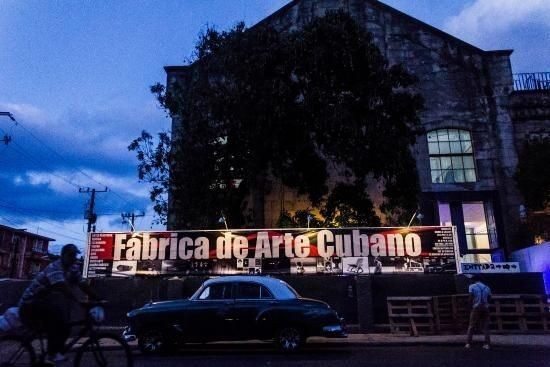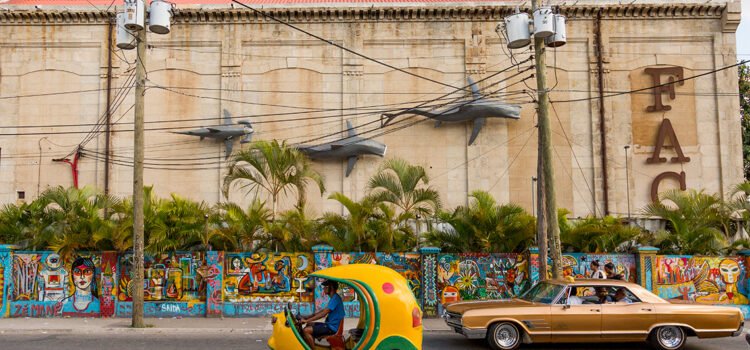Throughout the 20th century numerous factories arose in the Cuban capital, some of which are now in disuse.
The characteristics of its facilities (large-sized buildings, spacious premises and high-quality construction) have made them interesting assets for various reconversion purposes.
There are many elements, goods and buildings of industrial origin located in the urban fabric of Havana that have a high heritage value.
Such is the case that concerns us, the old Vedado Power Plant, later the El Cocinero oil refining factory and currently the Cuban Art Factory.

This building has urban, architectural and environmental values that make it a true exponent of the industrial heritage of the city. In addition, its history is inextricably linked to that of the El Carmelo neighborhood.
What is the Cuban Art Factory?
Cuban Art Factory (FAC) also known as The House of Art and Cuban Artists is a cultural project created by the renowned Cuban musician X Alfonso since February 13, 2014, it has its permanent enclave in the building that corresponded to a warehouse in the Vedado neighborhood of the capital, located on Calle 26 between 11 and 13.
Project motivations
The driving force of this artistic project is the need to rescue, promote and support works from all branches of art, as well as to promote the exchange and direct rapprochement between the public and the creator on a mass level, where multiple artistic manifestations such as music come together. , photography, dance, theater, plastic arts and industrial design, among other specialties.
Defined by X Alfonso himself as a Vanguard Contemporary Cultural movement.
Factory structure
The space of the Cuban Art Factory is structured around four naves, dedicated to various disciplines and artistic manifestations.
The first nave is dedicated to the field of plastic arts and design, as well as fashion, architecture and music.
The San Alejandro Academy of Plastic Arts participates in the organization of periodic exhibitions for the exchange of experiences among its students, as well as in workshops and exhibitions in which the latest national and international trends in the field of design and expression are exhibited. plastic.
The second nave is oriented towards photography and video-art, and it houses the Photography Gallery, a space from which avant-garde initiatives of an interdisciplinary nature are promoted.
The third nave includes dance, cinema, theater and classical music, also housing the digital library. It has an audiovisual projection room, in which fiction films, documentaries, short films and animations are shown.
The fourth nave is entirely dedicated to musical concerts, one of the events that form the backbone of the project.
This space has three rooms: the first for small-format events, another exclusively for classical music, and the one known as Nave Azul, specifically built for the interpretation, listening and expression of the Cuban music scene.
The Cuban Art Factory is a great tourist attraction and is visited by hundreds of Cubans and foreigners who come to enjoy the project.










